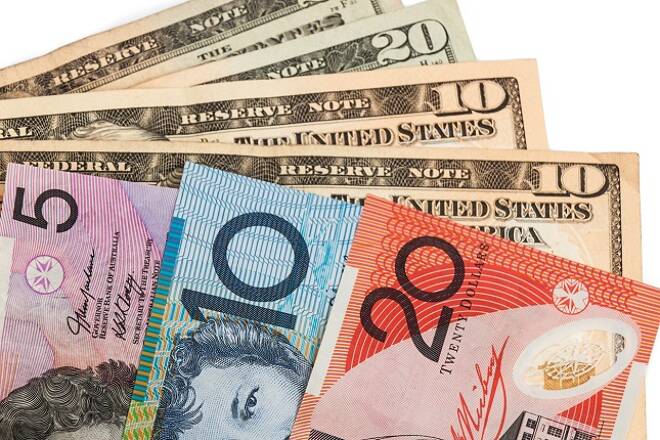Advertisement
Advertisement
AUD/USD and NZD/USD Fundamental Daily Forecast – Robust US Jobs Report May Have Capped Aussie, Kiwi Rally
By:
The Australian Dollar may have closed higher, but it posted its high for the session nearly five hours before the U.S. Non-Farm Payrolls report.
The Australian and New Zealand Dollars closed higher on Friday, continuing their strong risk driven rally as global equity markets continued to post stellar gains. However, gains were limited by a surge in the U.S. Dollar after the Bureau of Labor Statistics (BLS) released the official May jobs data.
On Friday, the AUD/USD settled at .6966, up 0.0023 and the NZD/USD finished at .6504, up 0.0042 or +0.65%.
Rise in Global Equity Markets Driving Demand for Higher-Risk Currencies
Asian stocks posted their biggest weekly rise in over eight years on hopes for a global rebound. Emerging market equities also boasted solid gains last week with the Philippines the star performer, having risen about 1,000 points, or 11.6%, a sign money was moving into riskier assets.
European stock markets also closed higher on Friday supported by the European Central Bank’s (ECB) announcement on Thursday of a 600 billion Euro ($672 billion) expansion of its Pandemic Emergency Purchase Programme (PEPP), a larger increase than analysts had been expecting.
The new injection brings the central bank’s total bond buying to 1.35 trillion Euros as it looks to weather what ECB President Christine Lagarde called an “unprecedented contraction” in the Euro Zone economy.
On Wall Street, all the major stock indexes rose sharply following the surprisingly strong U.S. jobs data.
May Sees Biggest US Jobs Increase Ever of 2.5 Million as Economy Starts to Recover from Coronavirus
Employment stunningly rose by 2.5 million in May and the jobless rate declined to 13.3%, according to data Friday from the Labor Department that was far better than economists had been expecting and indicated that an economic turnaround could be close at hand.
Economists surveyed by Dow Jones had been expecting payrolls to drop by 8.33 million and the unemployment rate to rise to 19.5% from April’s 14.7%.
The May gain was by far the biggest one-month jobs surge in U.S. history since at least 1939. The only previous month to register more than a million jobs was September 1983, at 1.1 million.
Short-Term Outlook
The Aussie and Kiwi may have closed higher on Friday, but if you look at the charts, the Australian Dollar posted its high for the session nearly five hours before the release of the U.S. Non-Farm Payrolls report. The New Zealand Dollar finished lower than where it was trading when the report was released.
So while the jobs data supported a rise in global equity markets, it did not necessarily drive up demand for the AUD/USD and NZD/USD. In fact, it looks as if the jobs report actually put a lid on the Aussie and Kiwi.
A sharp rise in U.S. Treasury yields had a lot to do with the price action after the report was released. The interest rate differential between US Government Bonds and Australian and New Zealand Bonds widened, making the U.S. Dollar a better investment.
We’ll be watching on Monday to see if U.S. Treasury yields continue to rise because this could be supportive for the U.S. Dollar. And if the greenback starts to retrace some of its recent losses, the Aussie and Kiwi are likely to correct its recent steep rally.
For a look at all of today’s economic events, check out our economic calendar.
About the Author
James Hyerczykauthor
James Hyerczyk is a U.S. based seasoned technical analyst and educator with over 40 years of experience in market analysis and trading, specializing in chart patterns and price movement. He is the author of two books on technical analysis and has a background in both futures and stock markets.
Did you find this article useful?
Latest news and analysis
Advertisement
